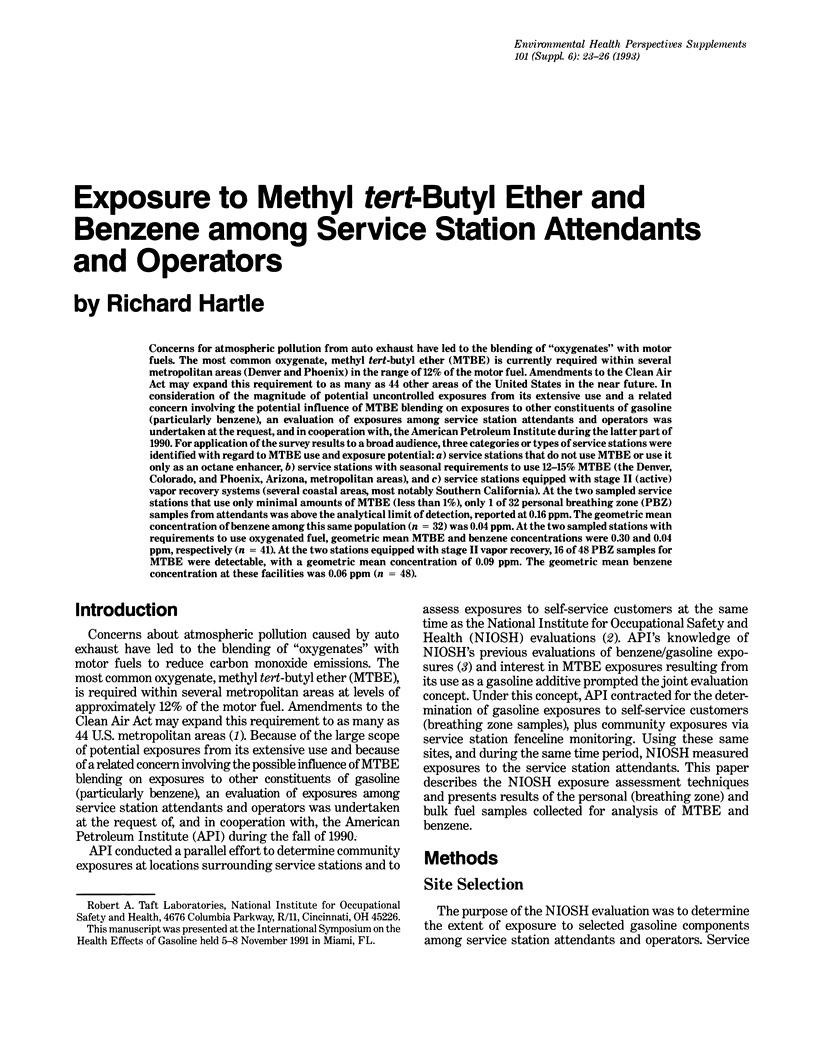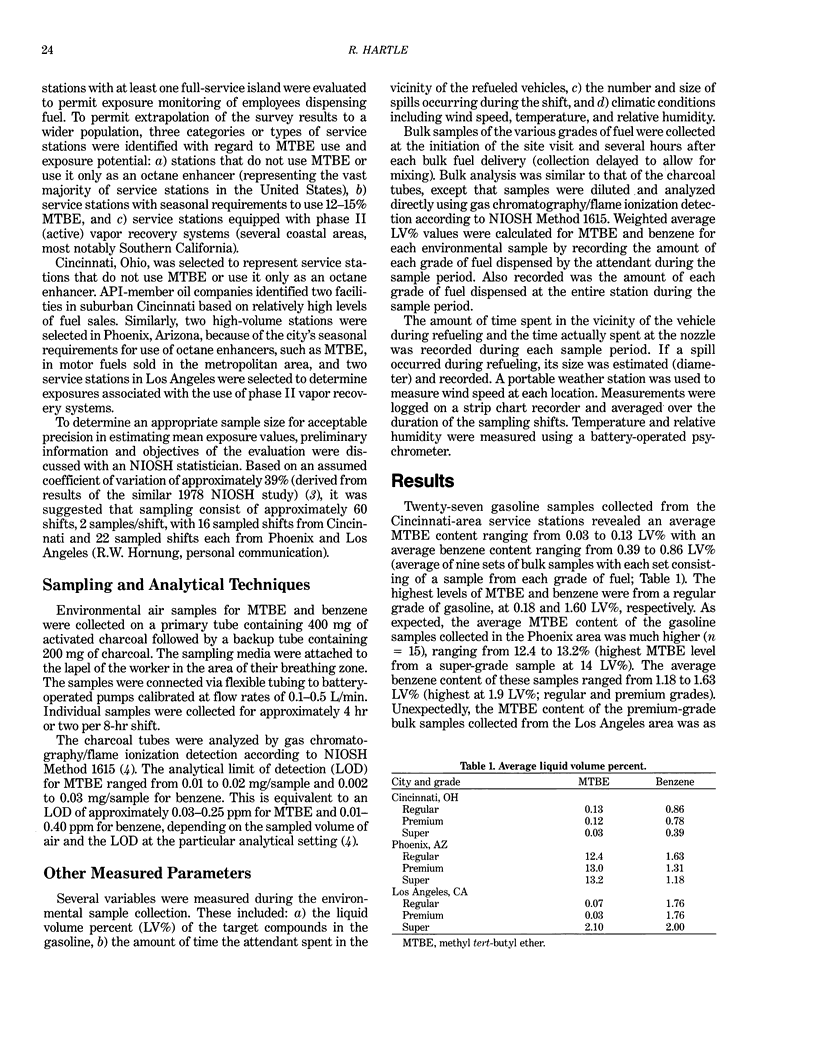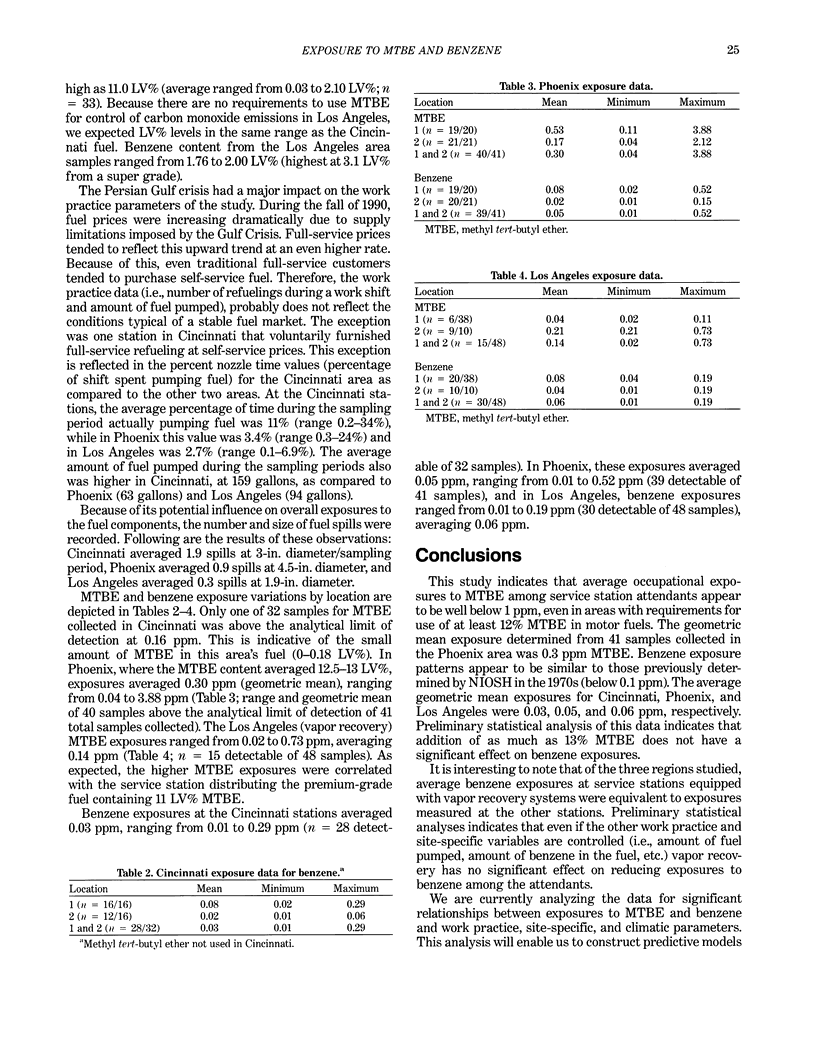Abstract
Concerns for atmospheric pollution from auto exhaust have led to the blending of "oxygenates" with motor fuels. The most common oxygenate, methyl tert-butyl ether (MTBE) is currently required within several metropolitan areas (Denver and Phoenix) in the range of 12% of the motor fuel. Amendments to the Clean Air Act may expand this requirement to as many as 44 other areas of the United States in the near future. In consideration of the magnitude of potential uncontrolled exposures from its extensive use and a related concern involving the potential influence of MTBE blending on exposures to other constituents of gasoline (particularly benzene), an evaluation of exposures among service station attendants and operators was undertaken at the request, and in cooperation with, the American Petroleum Institute during the latter part of 1990. For application of the survey results to a broad audience, three categories or types of service stations were identified with regard to MTBE use and exposure potential: a) service stations that do not use MTBE or use it only as an octane enhancer, b) service stations with seasonal requirements to use 12-15% MTBE (the Denver, Colorado, and Phoenix, Arizona, metropolitan areas), and c) service stations equipped with stage II (active) vapor recovery systems (several coastal areas, most notably Southern California). At the two sampled service stations that use only minimal amounts of MTBE (less than 1%), only 1 of 32 personal breathing zone (PBZ) samples from attendants was above the analytical limit of detection, reported at 0.16 ppm. The geometric mean concentration of benzene among this same population (n = 32) was 0.04 ppm.(ABSTRACT TRUNCATED AT 250 WORDS)
Full text
PDF





